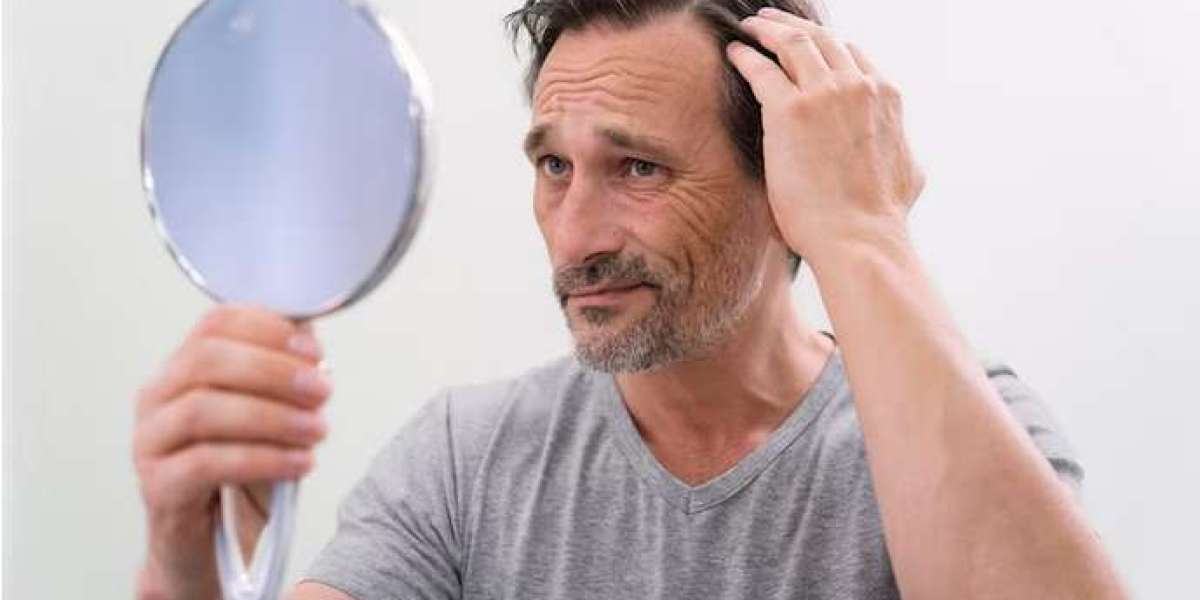Introduction
Hair loss is a pervasive issue that affects men globally, yet the stigma surrounding it often leads to silence and frustration. Understanding the causes of male hair loss and exploring proactive measures can empower individuals to break the silence and take action. This comprehensive guide aims to shed light on the complexities of male hair loss and provide insights into effective strategies for addressing this common concern.
The Silent Struggle: Male Hair Loss
Male hair loss, often referred to as male pattern baldness or androgenetic alopecia, is a condition characterized by a gradual loss of hair, typically starting at the hairline and crown. While a certain degree of hair loss is a natural part of aging, male pattern baldness is influenced by genetic and hormonal factors, leading to more pronounced and predictable patterns of hair thinning.
Understanding the Causes
Genetics: Family history plays a significant role in male pattern baldness. If a man's father or other male relatives experienced hair loss, there is an increased likelihood of inheriting the genetic predisposition for this condition.
Hormonal Factors: Hormones, particularly dihydrotestosterone (DHT), contribute to male pattern baldness. DHT, a byproduct of testosterone, binds to hair follicles, causing them to shrink and eventually cease producing hair.
Age: As men age, the rate of hair growth slows down, and hair follicles may become thinner. This natural aging process contributes to the gradual onset of male pattern baldness.
Medical Conditions: Certain medical conditions, such as thyroid disorders and autoimmune diseases, can contribute to hair loss. Addressing underlying health issues is essential in managing hair loss effectively.
Taking Action: Strategies for Male Hair Loss
Over-the-Counter Topical Treatments:
a. Minoxidil: Widely available over-the-counter, minoxidil is a topical solution or foam applied directly to the scalp. It promotes blood flow to the hair follicles, encouraging hair growth and slowing down the progression of hair loss.
b. Caffeine-Based Products: Some shampoos and topical products contain caffeine, known for its stimulating effects on hair follicles. While research is ongoing, caffeine-based products offer a non-prescription option for those seeking additional remedies.
Prescription Medications:
a. Finasteride: Available by prescription, finasteride is an oral medication that inhibits the action of DHT. It has been shown to be effective in slowing hair loss and promoting regrowth, particularly in the crown and frontal areas.
b. Dutasteride: Similar to finasteride, dutasteride is another prescription medication that inhibits DHT. While not FDA-approved specifically for hair loss, it is sometimes prescribed off-label.
Low-Level Laser Therapy (LLLT):
a. Devices: LLLT devices, such as laser caps or helmets, utilize low-level lasers to stimulate hair follicles. This non-invasive option can be used at home and has shown promise in promoting hair growth and slowing down hair loss.
Platelet-Rich Plasma (PRP) Therapy:
a. Procedure: PRP therapy involves drawing a small amount of the patient's blood, processing it to concentrate the platelets, and then injecting the PRP into the scalp. Rich in growth factors, PRP stimulates hair follicles, promoting hair regrowth.
Hair Transplantation:
a. Surgical Procedure: Hair transplantation is a surgical option that involves relocating hair follicles from donor areas to areas experiencing hair loss. This provides a lasting solution with natural-looking results.
Healthy Lifestyle Practices:
a. Balanced Diet: A nutrient-rich diet supports overall hair health. Key vitamins and minerals include biotin, vitamins A and E, iron, and omega-3 fatty acids.
b. Stress Management: Chronic stress can contribute to hair loss. Practices such as meditation, yoga, or deep breathing exercises can help manage stress levels.
c. Scalp Care: Regular scalp massage promotes blood flow to the hair follicles, creating a favorable environment for hair growth.
Breaking the Stigma: Seeking Professional Guidance
Taking action against male hair loss often begins with breaking the silence and seeking professional guidance. Consulting with a dermatologist or trichologist can provide valuable insights into the specific causes of hair loss and help tailor a personalized treatment plan.
Conclusion
Understanding male hair loss is the first step towards breaking the silence surrounding this common issue. By exploring the causes and available solutions, individuals can take proactive measures to address hair loss and regain confidence. From over-the-counter treatments to prescription medications, innovative therapies, and healthy lifestyle practices, the options are diverse. Seeking professional guidance ensures a tailored approach to managing hair loss, breaking free from the silence, and embracing a journey towards a fuller, healthier head of hair.



